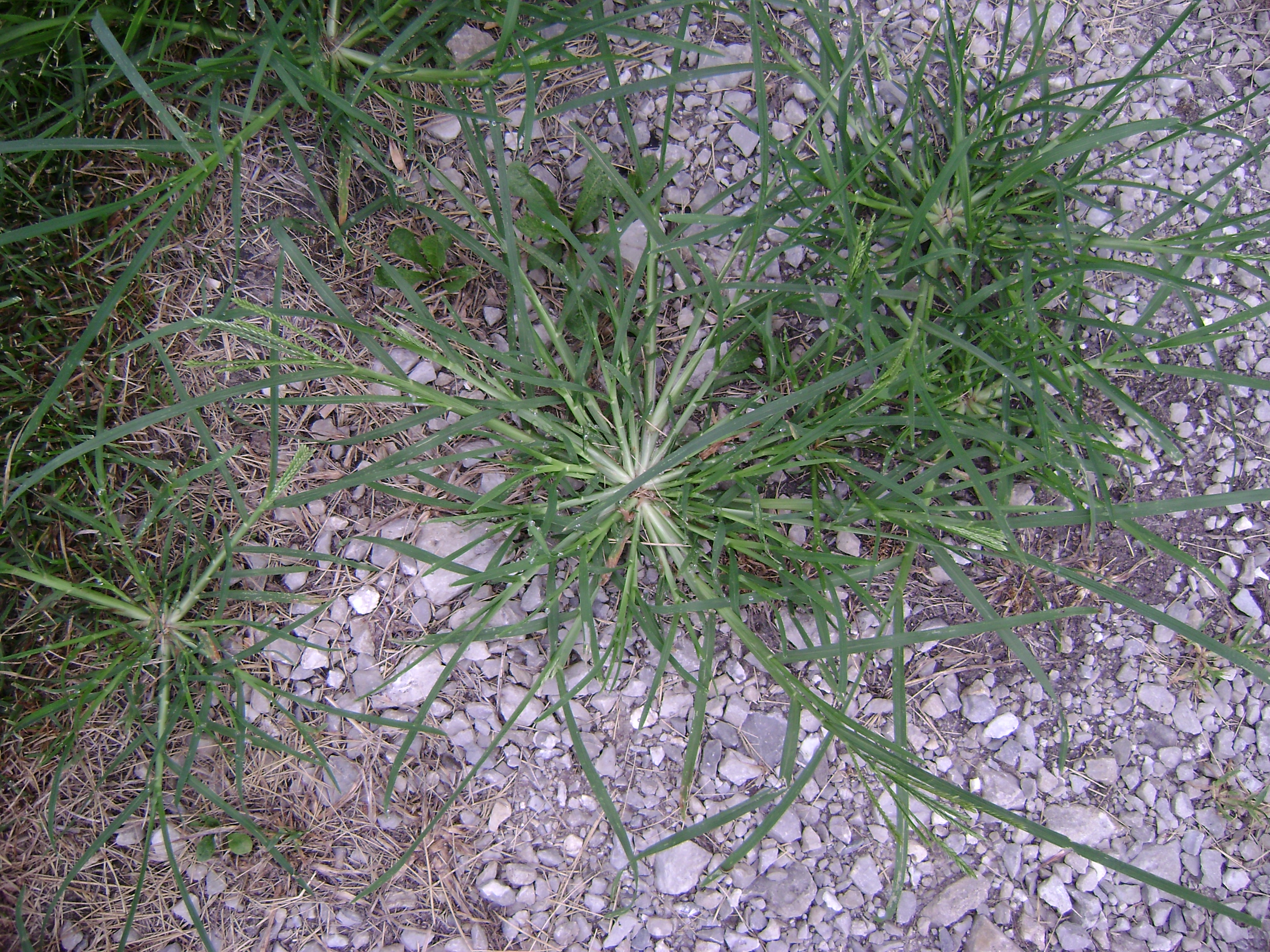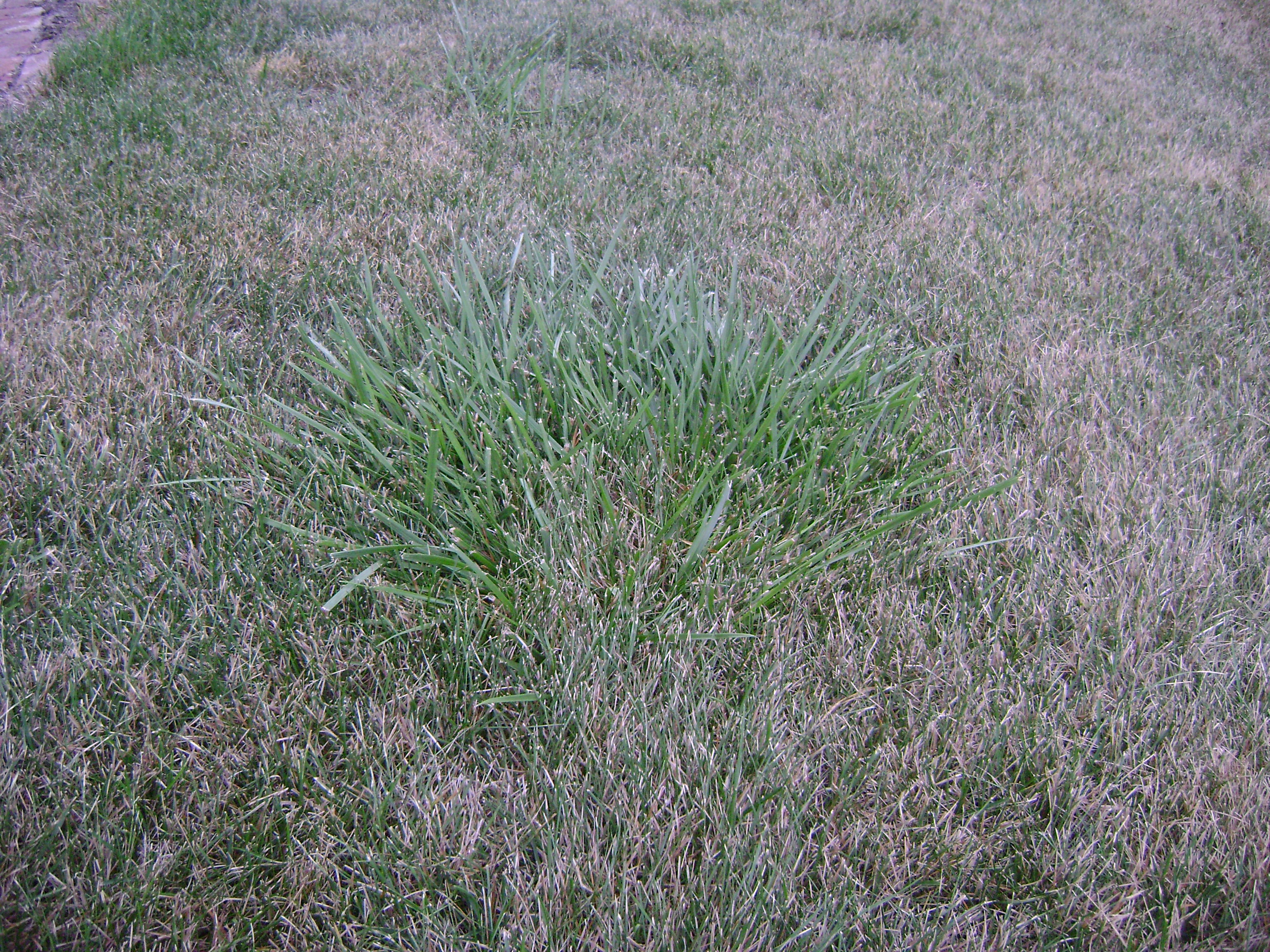Picture of the Week
August 9, 2021
Grassy weeds becoming obvious in dormant turf areas.
Glenn Hardebeck, Turfgrass Research Agronomist, Purdue University
As the summer heat and drought slow the growth of our cool season grasses such as Kentucky bluegrass, other drought and heat resistant grasses begin to stand out. Three here include crabgrass, goosegrass and tall fescue. In most situations, control of these grasses is better left until this fall or next spring depending on the species. Crabgrass and goosegrass are annual grasses that are primarily controlled with preemergent grass herbicides applied early spring. Tall fescue is a perennial and therefore can not be removed from a turf stand with a preemergent herbicide. Control of tall fescue requires multiple applications of a non-selective herbicide such as Roundup or if a reasonable number of small clumps are present, they can be removed manually. Additional information can be found in these publications: AY-10-W, Control of Crabrass in Home Lawns and AY-11-W, Identification and Control of Perennial Grassy Weeds.
Click image to enlarge
 Green clumps of tall fescue (left) as well as crabgrass and goosegrass (bottom right) are very conspicuous in this dormant Kentucky bluegrass lawn.
Green clumps of tall fescue (left) as well as crabgrass and goosegrass (bottom right) are very conspicuous in this dormant Kentucky bluegrass lawn. 






